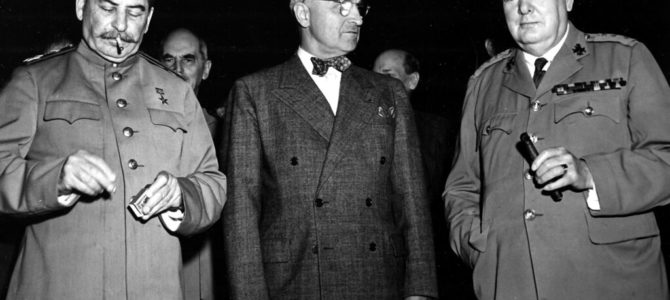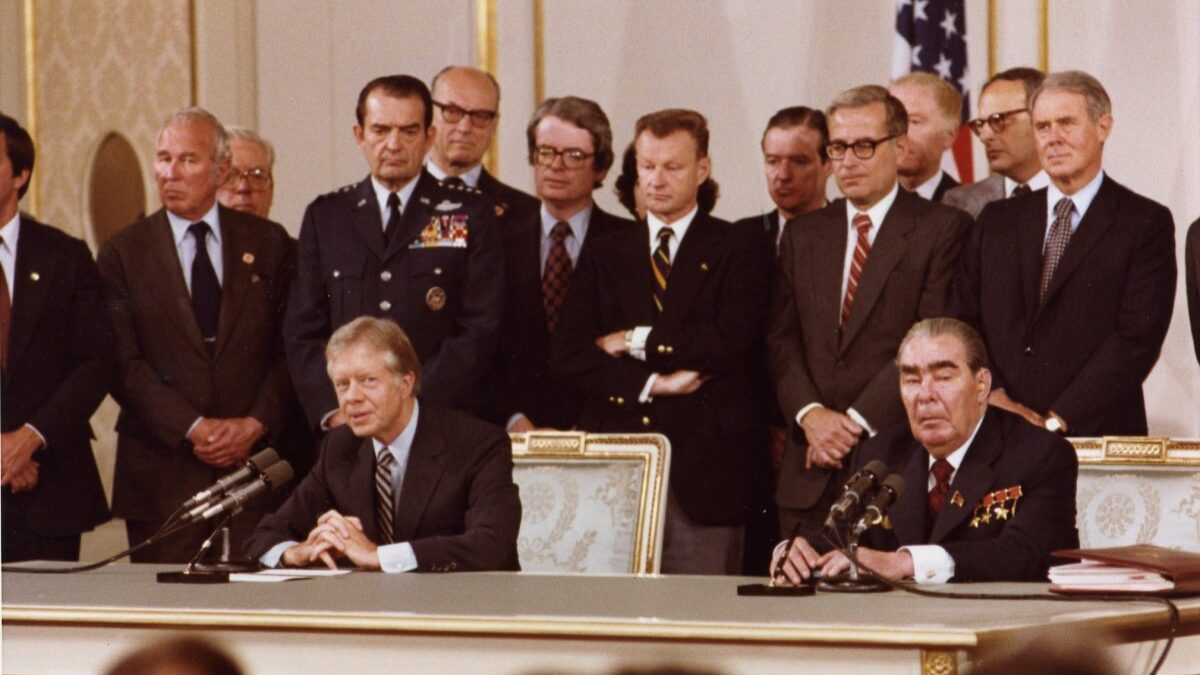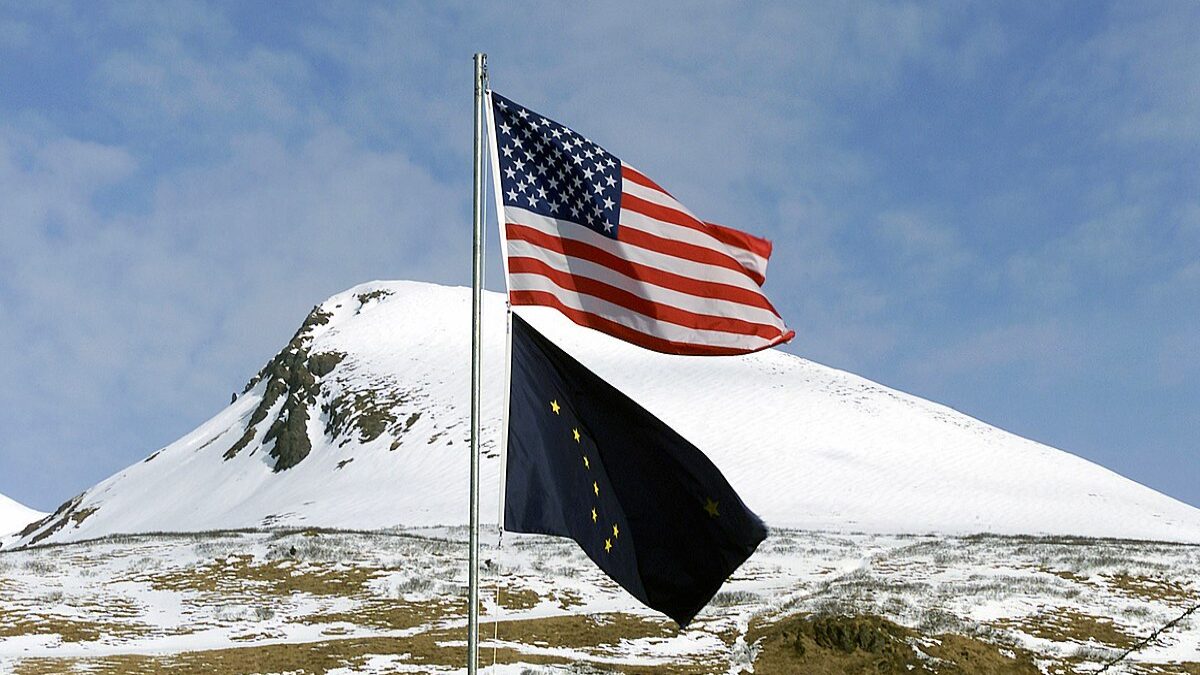
"A moment before the start of the first session of the conference. The "Big Three" chat informally - Berlin, Germany. L-R. Generalissimo Joseph Stalin, Pres. Harry S. Truman and Prime Minister Winston Churchill. Released: 7/24/1945. 80-G-49986"by HarryKidd is licensed under CC BY-NC-SA 2.0
Wanda Wos Lorenc did not have an easy life. Her idyllic childhood in Poland was shattered in 1939 when Nazi Germany and the Soviet Union invaded her country, carving it up between them. Not one to meekly surrender, Wanda joined Polska Walczy (Poland Fights), an underground army, serving as a messenger and nurse. Polska Walczy continued to fight, even as Adolf Hitler betrayed his erstwhile ally and invaded the Soviet Union.
After the failed Warsaw Uprising against Nazi rule in 1944, Wanda was sent to Ravensbrück, the infamous Nazi concentration camp for women. When the camp was eventually “liberated” by Soviet soldiers, Wanda watched as Red Army soldiers systematically raped her fellow prisoners.
This atrocity was a foretaste of Poland’s future. After surviving a brutal Nazi occupation that killed almost 20 percent of the population, Poland was now subjected to a half century of enslavement under communist rule. Wanda and her family decided they couldn’t take it anymore, and managed to narrowly escape by traveling to Yugoslavia and running across the Austrian border. Millions of her compatriots were not so lucky, and continued to suffer for decades behind the Iron Curtain.
Fascism and Communism Unite in Terror
Wanda’s unique story represents just one life out of millions crushed between the Nazi-Soviet vice. The Molotov-Ribbentrop Pact (also known as the Nazi-Soviet Pact), signed 80 years ago as of this August 23, divided Eastern Europe into German and Soviet spheres of influence. Joseph Stalin’s enabling of Hitler and joint invasion of Poland directly led to the beginning of World War II and the ensuing death and misery of so many people.
Sadly, this fact has been obscured with time, partly because the Soviets eventually helped the Allies beat Hitler (only after being forced to fight a defensive war against Germany). Yet the lesson of the Molotov-Ribbentrop Pact must never be forgotten: fascism and communism are birds of a feather and culpable of some of the worst atrocities in human history.
Although the two ideologies are often viewed as polar opposites, they are almost indistinguishable. An old Romanian joke tells it best: Romanians used to say that many greenshirts of the fascist Iron Guard movement in Romania “ripened” like tomatoes when they went red—that is, turned communist. Similarly, some former Nazis had no problem “ripening” after World War II by going to work for the East German Stasi. That former fascists found it so easy to switch sides is very telling.
Communism and fascism are both profoundly anti-Western, demonize ethno-religious minorities, rely on centralized economic control, encourage aggressive militarism, and give rise to cults of personality that idolize a political ruler, be it Der Führer, Il Duce, or the Father of Nations (Stalin’s biblical nickname granted him by the Soviet press). The New York Times, which today publishes articles praising socialism and ignoring historic communist crimes, did well in 1939 to write that “Hitlerism is brown communism, Stalinism is red fascism.”
The Nazis and Soviets Agree
But don’t take it from me. Just listen to what the Soviets and Nazis said about each other. Between 1939 and 1941, Soviet propaganda about Nazi Germany was positively glowing, to the point that the Soviets began painting swastikas on public buildings and on posters of Soviet leaders.
Stalin wasn’t shy about his praise for Hitler. When he heard of the Night of the Long Knives, Hitler’s purge of all opponents within the Nazi Party, the Soviet dictator remarked: “Some fellow… that Hitler. Knows how to treat his political opponents.”
Hitler saw a kindred spirit in Stalin, and appreciated his brutal rise to power. The Führer believed that Stalin “is one of the most extraordinary figures in world history. He began as a small clerk, and he has never stopped being a clerk,” governing a bureaucracy “that obeys his every nod and gesture.”
Even in 1942, well into the Nazi invasion of the USSR, Hitler continued seeing Stalin as “a tremendous personality, an ascetic who took the whole of that gigantic country firmly in his iron grasp.” In those early days of the conflict on the Eastern Front, when Nazi victory over Russia seemed sure, Hitler said that “if Stalin had been given another ten or fifteen years, Russia would have become the mightiest state in the world.”
Stalin: Marx’s Ideological BFF
Nor do the similarities end there. You’d be forgiven for thinking that it was Joseph Goebbels who said: “What is the worldly religion of the Jew? Huckstering. What is his worldly God? Money…Money is the jealous god of Israel, in face of which no other god may exist.” In fact, that was written by Karl Marx in 1844.
Stalin shared Comrade Marx’s dislike of the Jews. Despite his lofty statement in 1931 that “Anti-Semitism, as an extreme form of racial chauvinism, is the most dangerous vestige of cannibalism,” Stalin had no problem persecuting Jews when it served his needs.
In 1939, to appease Hitler and show him he was serious about a Nazi-Soviet alliance, Stalin gave orders to his foreign minister, Vyacheslav Molotov, to “purge the [foreign] ministry of Jews.” Molotov didn’t even try to hide his excitement, saying: “Thank God for [Stalin’s orders]! Jews formed an absolute majority in the leadership and among the ambassadors. It wasn’t good.”
Nazis Dug the Idea of a Socialist Economy
The Nazis and communists also shared similar economic views. Although some today insist on claiming the Nazis were capitalists, Hitler and his cronies always saw the state as supreme over all sectors of society, including the private sector.
As Ludwig Von Mises put it, the Nazi economy was “socialism with the outward appearance of capitalism,” a system in which the government “tells…entrepreneurs what and how to produce, at what prices and from whom to buy, at what prices and to whom to sell,” and “decrees at what wages labourers should work, and to whom and under what terms the capitalists should entrust their funds.” A centralized economy is still a centralized economy, no matter the wrapper.
To be sure, as some have pointed out, the Nazis never nationalized most industries, and private industry saw rising profits during much of WWII. But any country can become rich from constant theft from its neighbors, especially considering the Nazis gave German industry free reign to use slave labor and equipment plundered from conquered nations.
Given all of these similarities, you might ask: how can communists and fascists truly be so similar if they waged such a long and murderous conflict on each other?
Although Hitler and Stalin had a kind of sick admiration for each other, what ultimately interested Hitler was “Lebensraum” for the German people. What better place to provide living room than a nation that stretches over 11 time zones, especially a nation inhabited by Slavs, who the Nazis perceived as subhumans fit only to be enslaved or exterminated? Hitler’s attack on the Soviet Union was an opportunistic land grab against a seemingly weak neighbor with plenty of land and resources ripe for the taking.
Allying with Stalin Was a Pragmatic Choice
All of this is not to say that the Western powers did wrong in allying with Stalin against Hitler. As Winston Churchill said on the eve of Operation Barbarossa: “If Hitler invaded Hell, I would make at least a favorable reference to the Devil in the House of Commons.” Stalin and Hitler were both psychotic tyrants, but Hitler posed a more immediate existential threat to world security. Allying with the Soviets to defeat Hitler, then containing Soviet expansionism during the Cold War was the best option the Western Allies had under the circumstances.
The anniversary of the Molotov-Ribbentrop Pact is still commemorated in more than 10 countries as Black Ribbon Day. Although fascism was utterly defeated in the battlefields of Europe, communism lived on. In the Eastern Bloc, Cambodia, China, Cuba, North Korea, Vietnam, and many other nations, communist regimes continued murdering, torturing, and starving millions of innocents for decades to come—and they continue to do so to this day. Despite the fall of the Berlin Wall 30 years ago, one-fifth of the world’s population continues to live under communist rule.
When remembering this 80th anniversary of the Nazi-Soviet Pact, we must continue commemorating the victims of both fascism and communism, and we owe it to them to remember that these ideologies are two sides of the same toxic coin.













